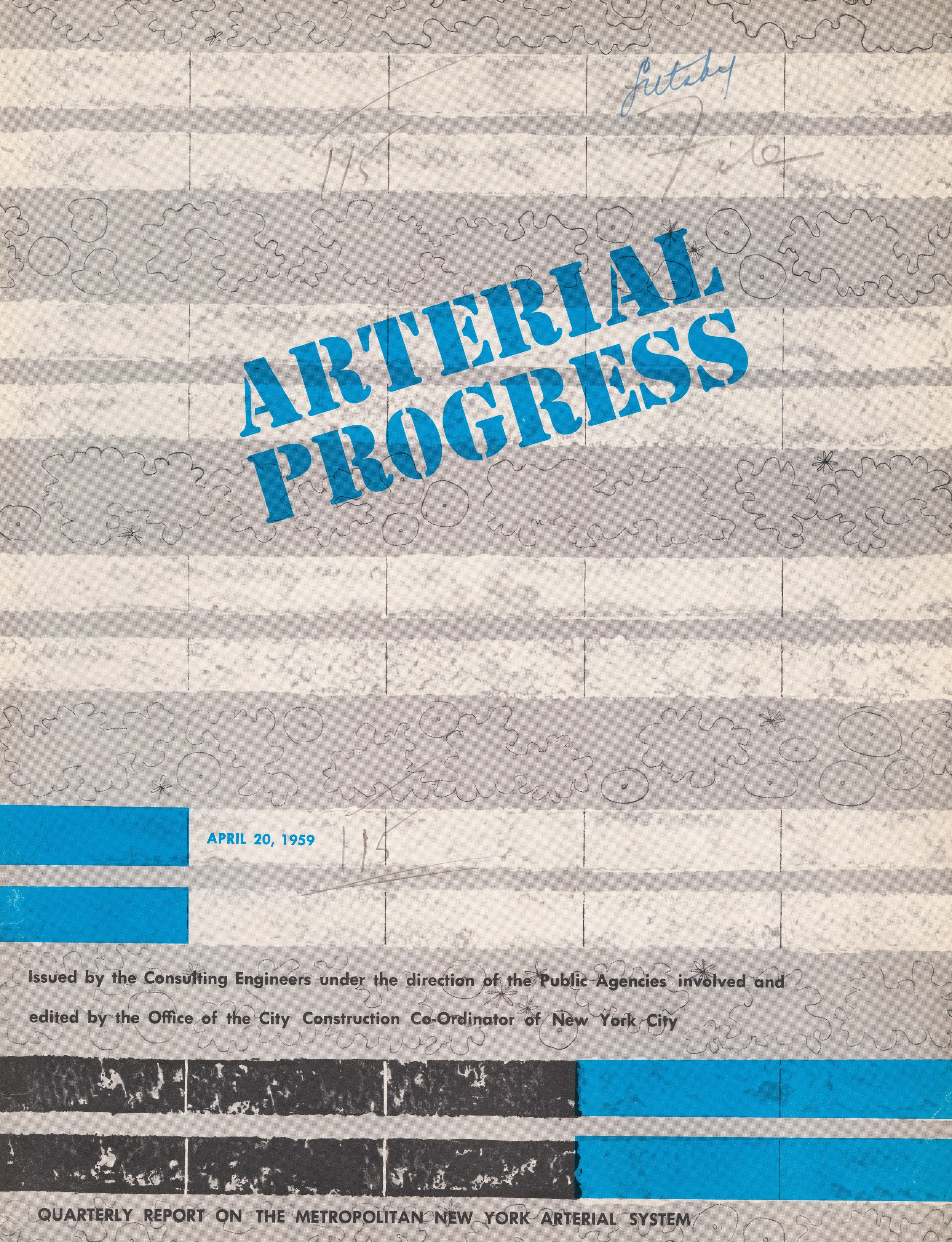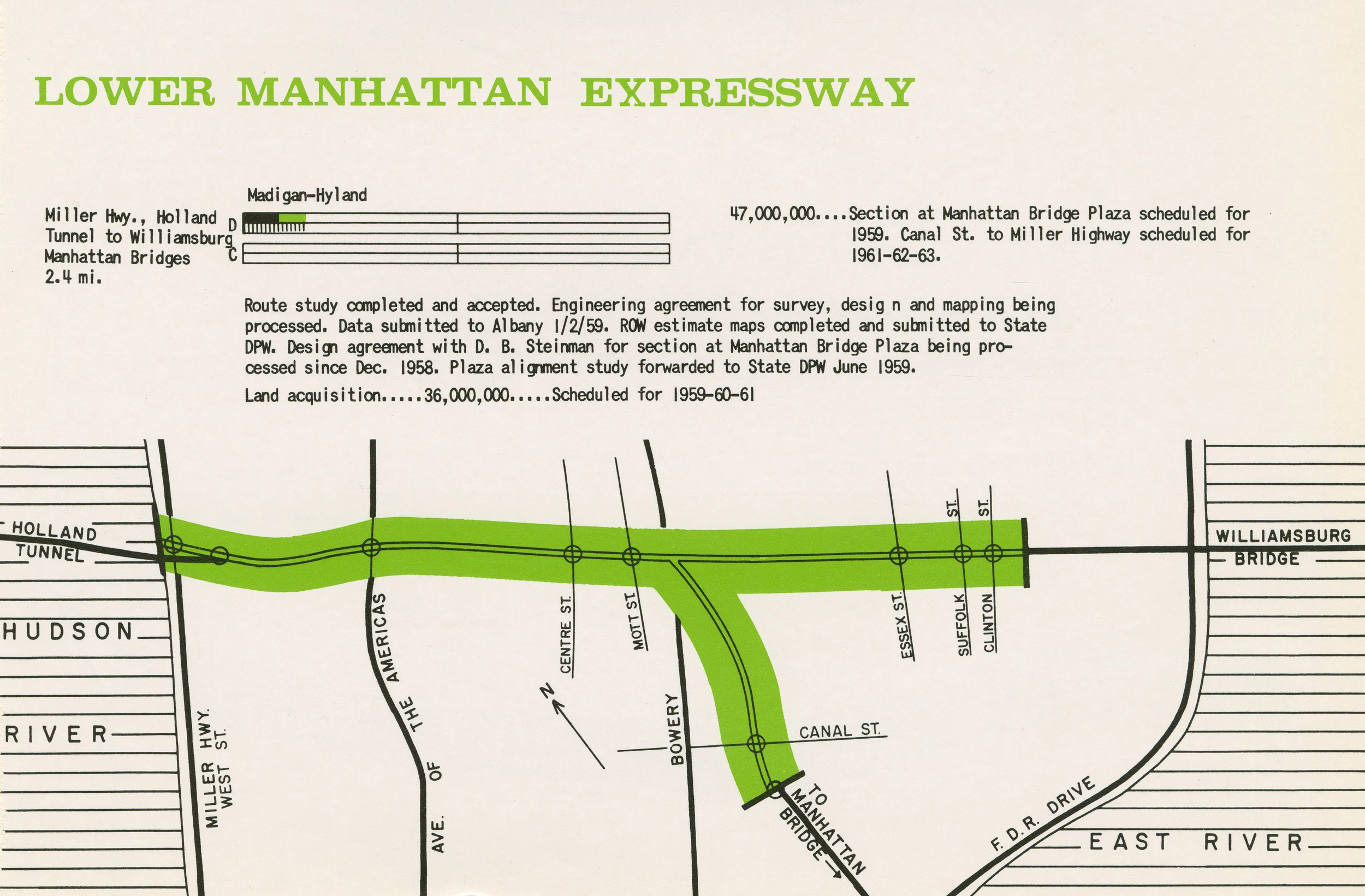New York City Planning & Robert Moses' Vision of Downtown
It was an era of sweeping reorganization around the automobile—exemplified by the 1939 New York World’s Fair and Le Corbusier’s “Radiant City”—New York City was a vast testing ground for utopic planning and design. Based on the idea that urban centers were congested—a dystopian chaos—the master-designers of the early 20th century used highway construction to create order, and to move the population out to white picket single family houses in suburbia. What to do with the poor? “Slum clearance” gave the appearance of opening the streetscape to light in the “city of shadows.”
A charismatic person with a strong and sometimes unpleasant personality, Robert Moses spearheaded the creation and development of many public parks, highways, bridges, and other public works projects.
The Lower Manhattan Expressway became part of Moses’ plan for a regional arterial highway system. Moses relied on engineering reports and his personal view that eliminating existing neighborhoods, (aka: Slum Clearance) was beneficial to all and that automobiles were essential to urban life.
Arterial Progress Reports were issued by consulting engineers with the cooperation of the public agencies involved and edited by the Office of the City Construction Coordinator of New York City.





